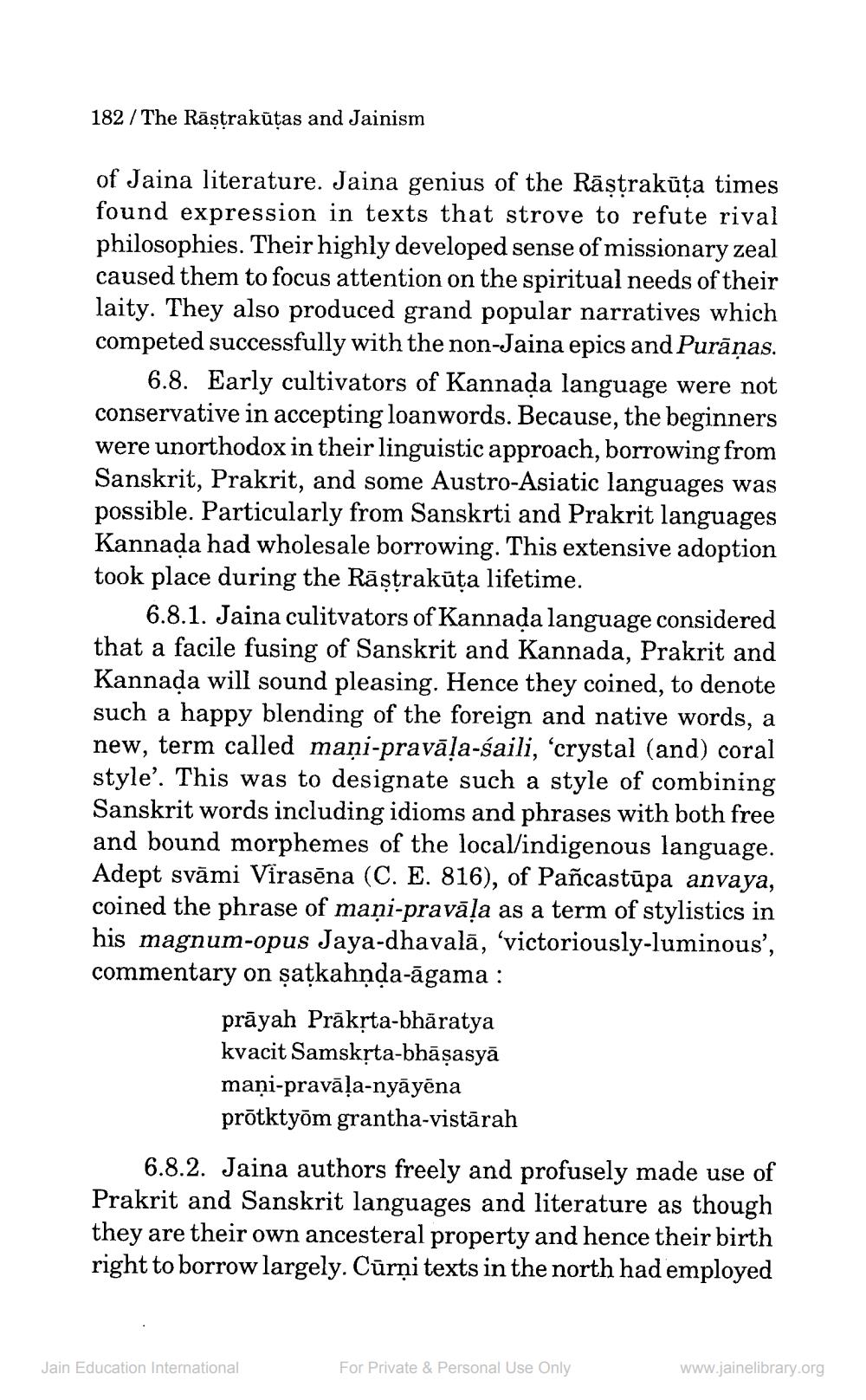________________
182 / The Rāstrakūtas and Jainism
of Jaina literature. Jaina genius of the Rāştrakūța times found expression in texts that strove to refute rival philosophies. Their highly developed sense of missionary zeal caused them to focus attention on the spiritual needs of their laity. They also produced grand popular narratives which competed successfully with the non-Jaina epics and Purāņas.
6.8. Early cultivators of Kannada language were not conservative in accepting loanwords. Because, the beginners were unorthodox in their linguistic approach, borrowing from Sanskrit, Prakrit, and some Austro-Asiatic languages was possible. Particularly from Sanskrti and Prakrit languages Kannada had wholesale borrowing. This extensive adoption took place during the Rāștrakūta lifetime.
6.8.1. Jaina culitvators of Kannada language considered that a facile fusing of Sanskrit and Kannada, Prakrit and Kannada will sound pleasing. Hence they coined, to denote such a happy blending of the foreign and native words, a new, term called maņi-pravāla-saili, 'crystal (and) coral style'. This was to designate such a style of combining Sanskrit words including idioms and phrases with both free and bound morphemes of the local/indigenous language. Adept svāmi Virasēna (C. E. 816), of Pañcastūpa anvaya, coined the phrase of maņi-pravāla as a term of stylistics in his magnum-opus Jaya-dhavalā, ‘victoriously-luminous', commentary on şațkahņda-āgama :
prāyah Prākrta-bhăratya kvacit Samsksta-bhāșasyā maņi-pravāļa-nyāyēna
prótktyom grantha-vistārah 6.8.2. Jaina authors freely and profusely made use of Prakrit and Sanskrit languages and literature as though they are their own ancesteral property and hence their birth right to borrow largely. Cūrņi texts in the north had employed
Jain Education International
For Private & Personal Use Only
www.jainelibrary.org




